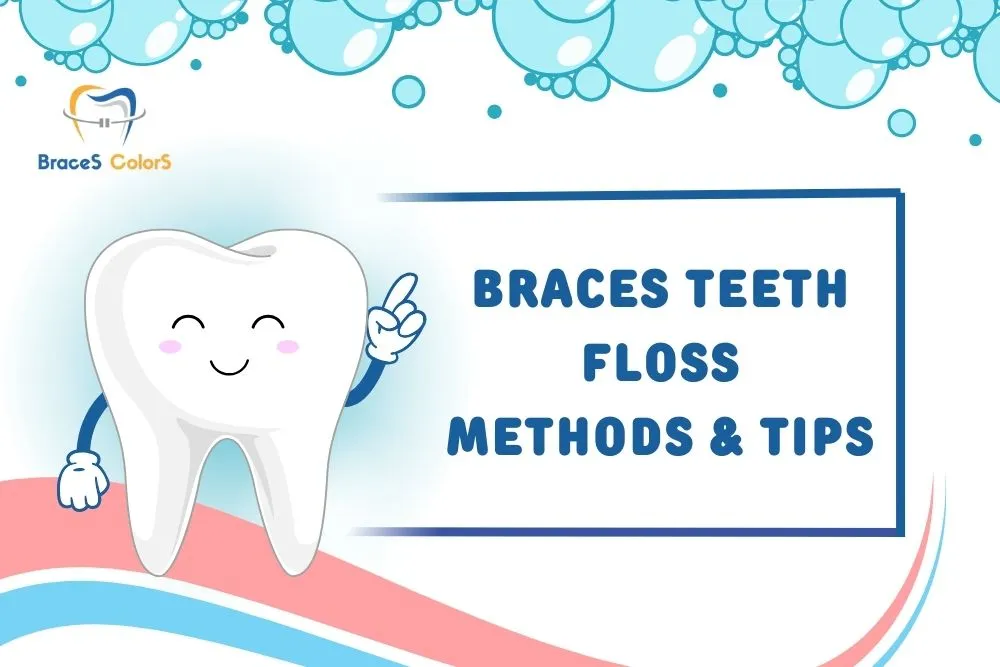Braces Teeth Floss : Your smile and your health depend critically on you cleaning and flossing your teeth while you wear braces.
Especially with brackets and wires in the way, flossing—that is, using wax-covered thread to clean between teeth—scrubbs the hard-to-reach areas that brushes just overlook.
Once a day, floss each tooth; clean beneath the wires and around the brackets with a thin interproximal brush.
Even if flossing takes more time with your braces, you shouldn’t neglect it. These flossing methods could expedite and simplify the process.
While braces are working to align your teeth for a more confident smile, flossing routinely helps prevent gum disease and tooth decay regardless of the technique you pick.
Custom Flossing
Although this tried-and-true flossing method is an excellent way to clear food and plaque from between teeth, it can be a little challenging for those wearing braces. It takes time to thread floss around brackets and wire.
If you follow this approach, schedule ten to fifteen minutes to floss your teeth. All you will need is waxed floss. Unwaxed floss could break and get caught in the metal braces.
Read also: Can Braces Make My Teeth Fall Out? What You Need to Know!
Why is Flossing with Braces so Vital?
The American Dental Association states “cleaning between teeth removes plaque that can lead tooth decay, to cavities or gum disease from the areas where a toothbrush can’t reach.”
Stated differently, flossing enhances your oral health, helps ward against cavities and gum disease, and removes plaque.
Someone who wears braces has a much higher risk for gum disease, cavities, and plaque development. Should you have braces to straighten your teeth, should you not wish for them to be clean and healthy throughout the process?
For this reason, we would want to teach you the simplest, most efficient methods of flossing teeth with braces.
How to Use Conventional Floss with Braces?
- Cut an 18–to 24-inch length of floss
- Work the floss between your teeth and the main wire. Being in front of a mirror allows you to see the thread and ensure it is moving where you would want it to.
- To make floss handling easier, wrap the ends around your index fingers
- Press the floss gently between the two teeth; then, glide it up and down along the sides of both teeth. If you are doing the upper teeth, create an upside-down U shape. From one tooth’s side to the gum line, then down the side of the other tooth.
- Take the floss and gently unthread it from under the wire. Take cautious not to pull the floss from the teeth. You can knock the wire by mistake and pop it from the bracket.
- Proceed to the next set of teeth and carry on the same procedure.
Oral Irrigator or Waterpik
One unusual instrument for cleaning between teeth and along the gum line is a waterpik, which runs a consistent stream of water Though some types are more costly, a water flosser is roughly $50.
With this tool, you only need three to five minutes to floss given the stream of water’s efficiency in cleansing your mouth.
Certain Waterpiks products include specific orthodontia advice. More readily than regular tips, these tapered tips can clean around braces and between teeth.
Read also: Diastema or Gap Between Teeth – Causes, Treatment & Prevention
Using a Waterpik, How should one floss?
- Empty the water reservoir of the machine. For an antimicrobial bonus, mix mouthwash into the water. This is not absolutely required, though.
- On the water flosser, position the tapered tip. Press to send water through the flosser to ensure it’s operating as it should and that the water pressure is sufficient for you.
- Lean over the sink and slide the flosser tip into your mouth.
- On the water flosser, turn ON. To stop water from splashing out of your mouth, close your lips. As you’re flossing, let the water trickle out of your mouth.
- Glide the water stream between every tooth and along the gumline.
- To free any food or trash, gently brush the teeth and braces as directed.
- Spray then once more along the gum line and between the teeth.
- Proceed this way both front and rear of every tooth.
- Empty the water reservoir after you’re done, then dry the flosser tip. To safeguard the tip, store in a closed container.
Advantages of Using Floss Thread with Braces
Using a floss threader to floss with braces has several advantages:
Extremely cheap: Your orthodontist will probably offer you a pack for free (or you could pick some up for a few bucks on Amazon or a drugstore).
Reusable: One pack probably will run you months or years.
A Method You Now Employ To Just the threader and floss—no more tools are required.
Drawbacks of Using Floss Thread with Braces
Using a floss threader to floss with braces has certain drawbacks:
Tricky To Use At First: Younger children more so are this true. Using the floss threader calls for some hand dexterity that young toddlers could find challenging.
Takes More Time Than Typical Flossing: Every tooth in your mouth must be flossed beneath the wire, thus the operation can be time-consuming.
View our DVD on brushing and flossing with braces! It shows exactly the application of floss threaders.
FAQs
Safe for braces and aligners, is dental floss?
For braces and aligners, dental floss is indeed safe. You should take great care, nevertheless, to prevent injuring them. Navigate beneath the wires with a floss threader.
Given braces or aligners, how often should I floss?
At least once every 24 hours, ideally before bed, floss to clear food particles and plaque that might gather during the day.
